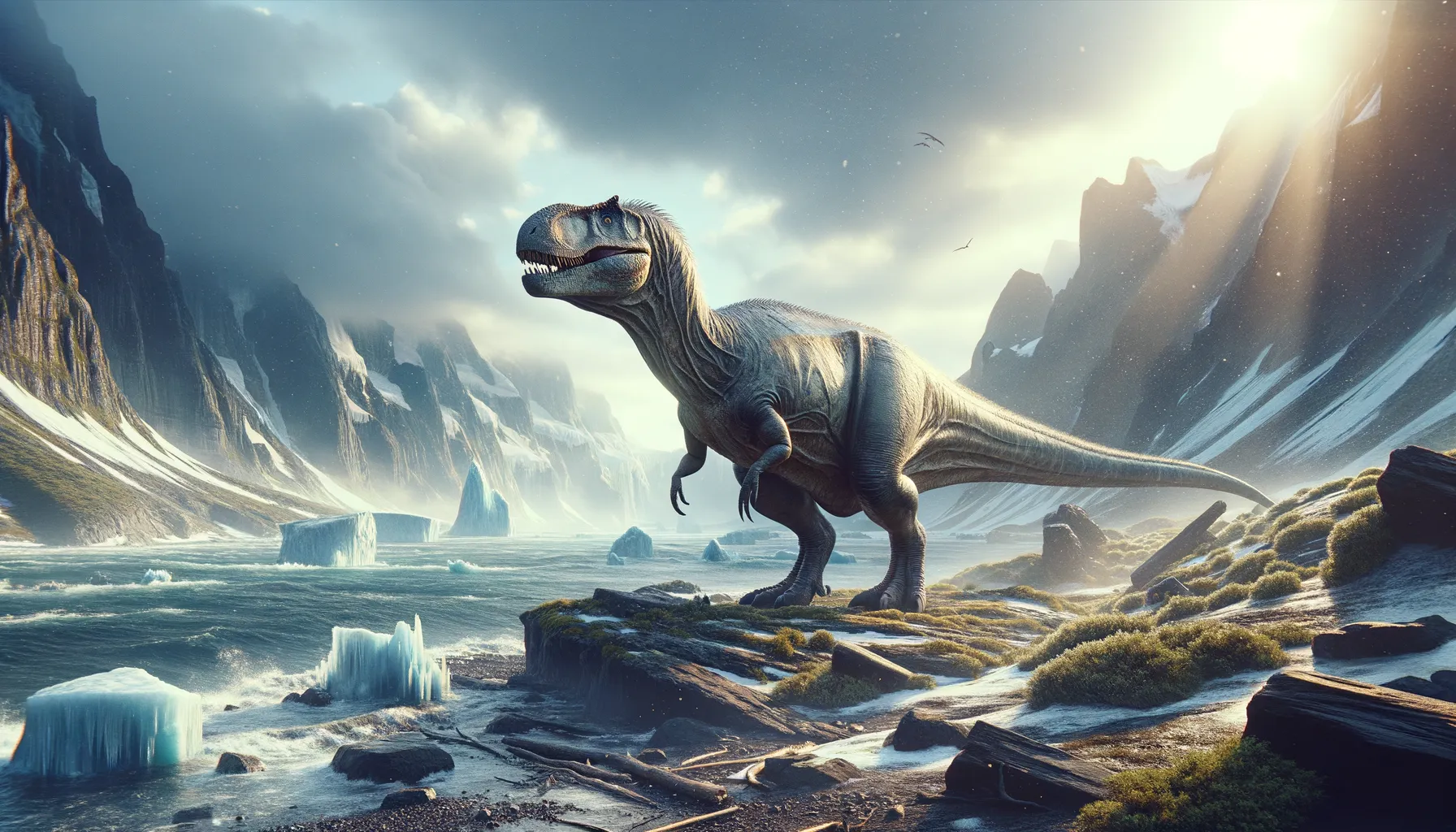
Glacialisaurus
Discover ancient giants of frigid lands.
Period
Jurassic
Length
Roughly 20 to 25 feet long.
Height
Estimated to be about 10 feet tall.
Weight
Approximately 4 to 6 tons.
Glacialisaurus was a massive herbivore that roamed the Antarctic regions during the Early Jurassic period. Known for its robust and sturdy frame, it is believed to have adapted to cooler climates. Its discovery challenged previous notions about dinosaur dispersion, revealing that these magnificent creatures once inhabited the icy realms of Antarctica. Glacialisaurus offers a unique glimpse into the adaptability and diversity of dinosaurs.
Diet
As a herbivore, Glacialisaurus primarily fed on available vegetation. It likely consumed ferns and other plant material that thrived in the cooler Antarctic climate. Its teeth and jaw structure were adapted for grinding plant material.
Hunting
Being an herbivore, Glacialisaurus did not hunt other animals. Instead, its daily activities likely involved foraging for a variety of plant-based foods. Its survival depended on the availability of seasonal vegetation.
Environmental challenges
Living in Antarctica, Glacialisaurus faced extreme and fluctuating temperatures. Ice and snow-covered landscapes posed challenges in finding food. Seasonal variations would have affected vegetation growth, requiring migration or adaptation to scarce resources. Quaking ice sheets and occasional volcanic activity may have added to the perilous environment.
Speed
Relatively slow compared to other dinosaurs.
Lifespan
Estimated to be several decades.
First discovery
Discovered in Antarctica in the early 2000s.
Fun Facts
- Glacialisaurus was a large dinosaur that lived around 190 million years ago during the Early Jurassic period.
- Its name means 'frozen lizard' because its fossils were found in Antarctica, a region that would have been much warmer then.
- Glacialisaurus was a herbivore, meaning it primarily ate plants.
- It belonged to a group called sauropodomorphs, which were the precursors to the giant long-necked dinosaurs.
- Despite being large, Glacialisaurus could walk on two legs, making it a bipedal dinosaur.
- The discovery of Glacialisaurus shows that dinosaurs were more widespread than previously thought.
- Only partial remains have been found, so scientists are still piecing together details about its appearance and lifestyle.
Growth and Development
Glacialisaurus likely experienced growth spurts during warmer periods when food was abundant. Juveniles may have stayed close to their family groups for protection and learning. Its bones show signs of growth rings, similar to tree rings, indicating seasonal variation in growth rates.
Habitat
Glacialisaurus inhabited the sparse, icy woodlands of Jurassic Antarctica. Adapted to colder climates, it thrived in the mixed conifer forests that once covered the region. Expansive coastal plains with rich ferns and shrubs provided its primary food source. Its habitat also included chilly rivers and lakes formed by glacial melt.
Interaction with other species
Glacialisaurus likely shared its environment with other herbivores and small carnivores. It may have competed with other large herbivores for food resources. Predation risk from local carnivorous dinosaurs could have influenced its social systems and defensive behaviors.
Natural lifespan
Glacialisaurus likely lived for several decades in the wild.
Reproduction
Glacialisaurus laid eggs, likely in communal nesting areas for protection. Nests were probably insulated with surrounding materials to conserve warmth. Parental care may have extended to keeping eggs safe from environmental and predatorial threats.
Social behaviour
Glacialisaurus might have lived in herds, benefiting from social structures for protection. Grouping together was likely a strategy for surviving predators and harsh climate conditions. Social behavior played a vital role in communicating danger and locating food sources efficiently.
Fossil locations
Fossil remains of Glacialisaurus have been excavated from Mount Kirkpatrick, Antarctica. These fossils were challenging to collect due to extreme weather and remote locations. The discovery significantly expanded knowledge about dinosaur distribution in ancient polar regions.
